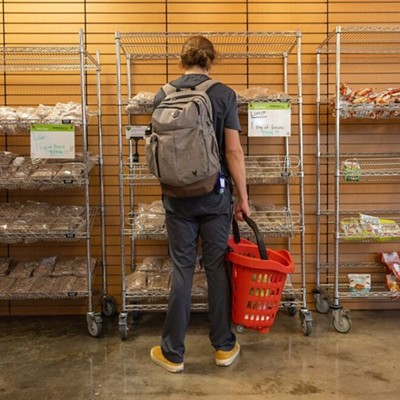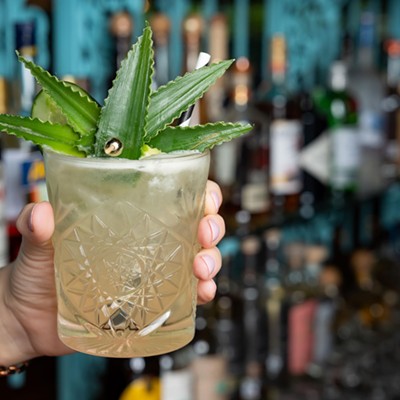I grew up calling any sandwich on long French or Italian bread a sub, like any normal human being would. Or so I thought, until I realized my aunt called it a grinder...and my friend called it a hoagie. WTF.
This is three people, from three states (New Jersey, Connecticut and Pennsylvania), calling the same sandwich by three different names. Since it really is a regional thing (with most of the variations stemming from crazy Italian-Americans in the Northeast like myself), I decided to take a closer look at who calls what where and if there's even a reason why.
And now I'm exhausted, but here we go:
Submarine (Sub)
What: A large sandwich consisting of a long roll split lengthwise and filled with layers of meat, cheese, tomatoes, lettuce, and condiments. from The American Heritage Dictionary of the English Language (4th edition, 2000) Where: Widespread with a large cluster of usage in the Northeast: Connecticut; Delaware; New Jersey; New York; Massachusetts. Why: There are a few theories, but most agree the sandwich was named after the submarine shape of the bread. According to the book What They Never Told You About Boston (or What They Did That Were Lies), the term was said to have originated at a sandwich shop in Boston where the bread was baked in the shape of a submarine and served to the large number of nearby Navy servicemen. Another theory suggests an Italian immigrant in New York started selling subs at his grocery store after seeing a recovered submarine at a museum in Patterson, New Jersey.
Hoagie
What: Regional variation of sub. Where: Delaware Valley; Philadelphia; South Jersey; Baltimore, Maryland Why: Again, there are a number of theories, the most common of which is based around a shipyard on Hog's Island, Pennsylvania. The workers, called hoggies, would bring large sandwiches to work. Another legend claims that a restaurateur coined the term, aptly named for the fact that you had to be a hog to eat one.
Hero
What: Regional variation of sub. Where: New York; Northern New Jersey Why: Theories suggest it could have been named after the sandwich's large size, meaning only a hero could finish it. Other claims have been made that it derives from the Greek sandwich called a gyro. New Yorkers unfamiliar with the term started calling the sandwich a hero.
Grinder
What: Regional variation of sub, sometimes used to describe hot subs. Where: Most of New England with the exception of Boston; the Midwest; Sacramento, California. Why: Likely derived from the grinding of teeth that is required to eat the chewy sandwich.
Torpedo
What: Regional variation of sub. Where: New York; New Jersey; other areas Why: Like a submarine, it is based on the torpedo shape of the bread.
Italian
What: Regional varation of sub (even if it's not an Italian sandwich). Where: Maine and other parts of New England Why: Named first for the use of Italian ingredients and Italian bread before spreading to describe a wider variety of sub-shaped sandwiches.
Wedge
What: Regional variation of sub. Where: Mainly Yonkers and other parts of Westchester County; The Bronx, New York; Upstate New York; Fairfield, Connecticut Why: Named because the sandwich is served between two "wedges" of bread
Zeppelin
What: Regional variation Where: Eastern Pennsylvania; Various New England Areas; New Jersey Why: Named after the airship pioneered by Count Ferdinand von Zeppelin that the sandwich roll is shaped like.
Po' Boy/Poor Boy
What: Regional varation made with French bread. Where: Originated in New Orleans; widespread throughout Gulf Coast and South Why: Most likely named because the sandwich makes an inexpensive but filling meal. According to Wikipedia, two brothers from Louisiana claimed to have coined the term in 1921, serving free sandwiches to former colleagues on strike at their New Orleans sandwich shop. Other theories suggest the term came from the city's French influence, perhaps derived from the French word pour boire (peace offering).
Cuban
What: Regional variation mainly used to describe a buttered and toasted long loaf of Cuban bread filled with yellow mustard, meats (mainly ham and pork), cheese (Swiss) and dill pickles. Where: Florida, mainly Miami and Key West; Cuban communities throughout the U.S. Why: According to Wikipedia, it is believed the sandwiches were originally created to "cater to Cuban workers in Cuba and the early immigrant communities of Florida."
Whatever you call it, give me a nice loaf of bread filled with quality meats, vegetables, cheeses and sauce and I'm good. What do you call your sandwich?
Follow Eating Our Words on Facebook and on Twitter @EatingOurWords






